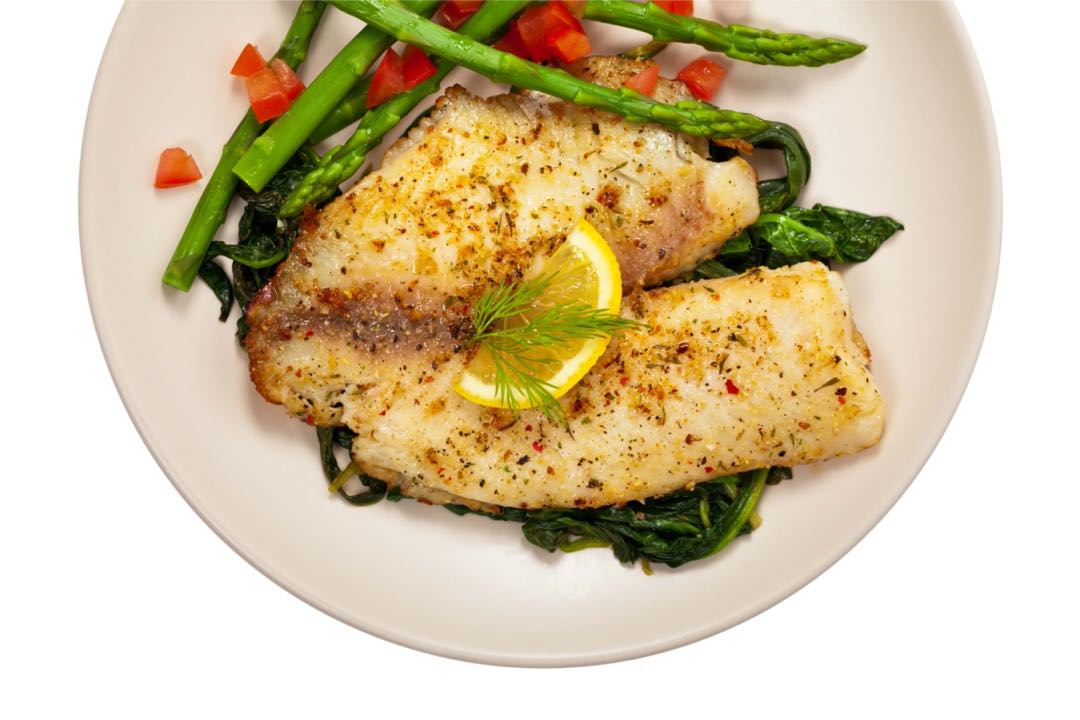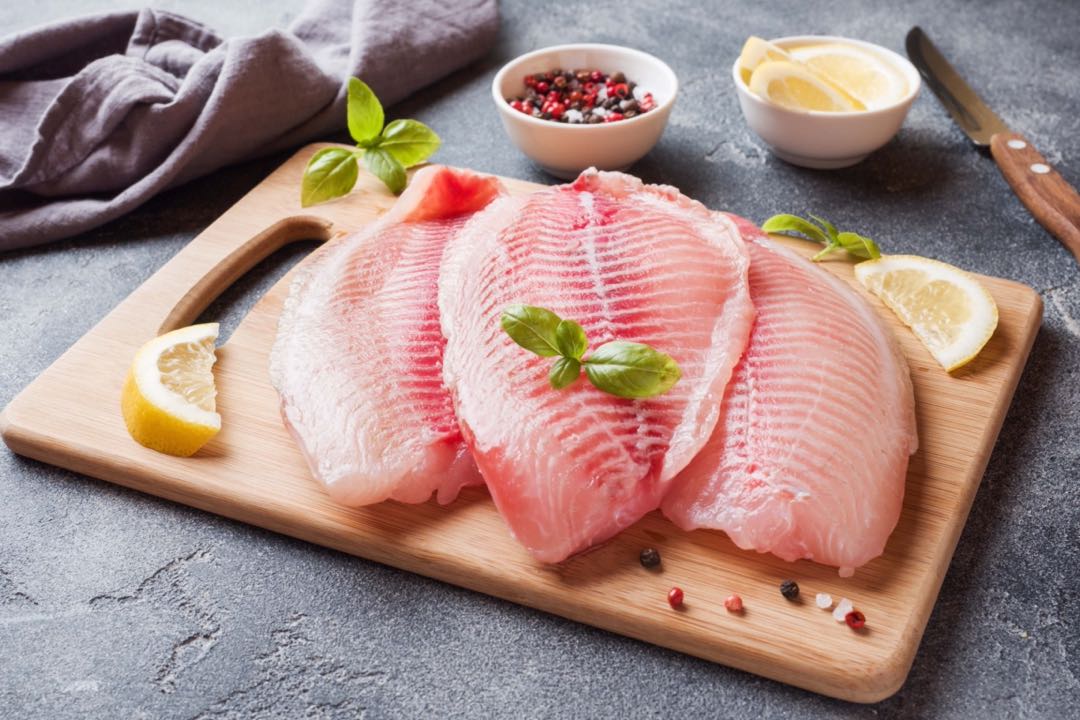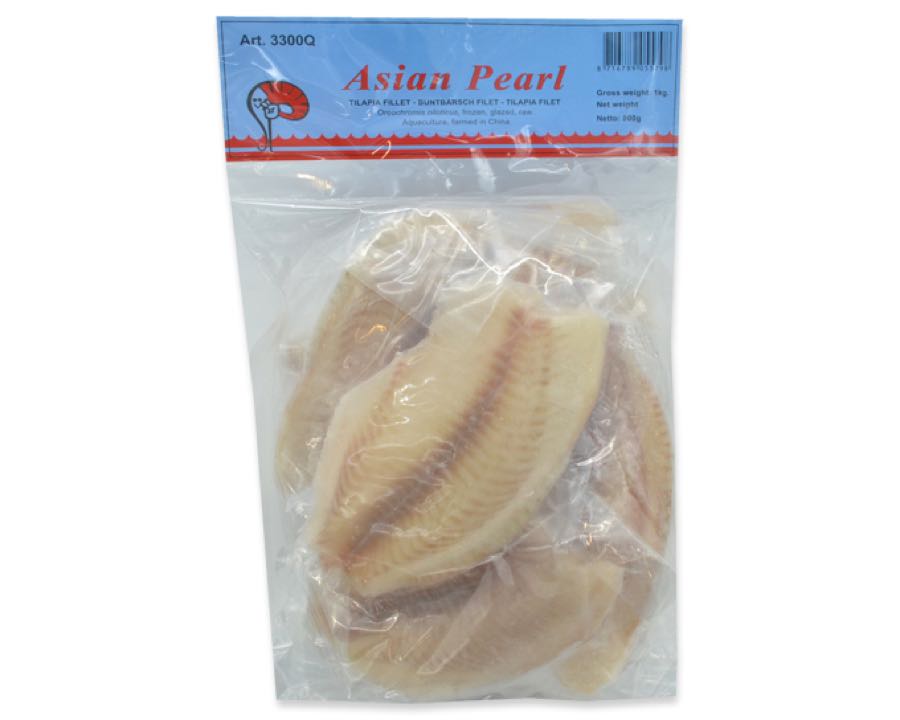Nederlands
English
Deutsch
Français
When it comes to farmed fish, tilapia is one of the most popular fish species at the moment, together with pangasius. In terms of delicacy, this fish falls into a lower category than, for example, sea bass, dorado or cod, but tilapia is certainly not a fish to be overlooked. Its firm flesh is easy to prepare, and its neutral taste makes it a fish that can be used in a wide variety of recipes.
Tilapia is readily available in the Netherlands. And not just in fish speciality shops or fish wholesalers; tilapia is also abundantly available in supermarkets. Where exactly does our tilapia come from, and what should you look for when buying tilapia?
Are you a buyer looking for tilapia, and do you want good-quality assurance? This article will tell you everything you need to know about the different types of tilapia, their origin, the catching and packaging process and the quality differences of this popular fish.
Topics covered in this article:
Most people commonly know the fish tilapia as white fish fillets, and not as a whole fish. This is because tilapia is usually displayed already filleted in the fresh fish section in fish shops. Nevertheless, tilapia has always been frozen first. In supermarkets, the tilapia fillets can generally be found in the freezer section, packaged per kilo bag or as vacuum-packed fillets.

What people often do not know is that “Tilapia” is actually a collective name for a large variety of ray-finned, tropical fish species. In the wild, there are up to eighty different species of fish called tilapia. These different species all belong to the Oreochromis, Sarotherodon and Tilapia genera. These are also all freshwater fish that mainly live on plant matter.
When we talk about tilapia in the Netherlands, we usually refer to Oreochromis niloticus. But where exactly does ‘our’ tilapia come from?
Tilapia is not only popular in the Netherlands. Two genetically very similar tilapia species have been commercialised throughout the world. Tilapia has been farmed by specialised companies (hatcheries) over numerous generations. Various characteristics are taken into account, such as colour (black or red), disease immunity, food conversion and growth rate.
Tilapia’s original habitat is the African Nile River, from which the Latin name Oreochromis niloticus originates. The Oreochromis mossambicus species is also found in central and southern Africa. The young fish of these two species are bred in Israel and sold all over the world, the largest customers being China, Vietnam, Taiwan and Indonesia.
So different varieties of tilapia have evolved on the market, including black tilapia and red tilapia These tilapia varieties can be sold as whole fish (gutted and de-scaled), as tilapia slices (with bones) or as tilapia fillets. Mooijer-Volendam has all these varieties of tilapia in its product range. The most popular and most traded tilapia species in Europe, Oreochromis niloticus, the Nile tilapia, is imported from China (black tilapia) and Vietnam (red tilapia).

The tilapia we consume on a large scale in the Netherlands is farmed. Can a fish that has been farmed on a large scale be sustainable?
One often hears negative stories about fish such as pangasius or tilapia – antibiotics, genetic engineering, polluted hatcheries … These are, of course, not just random slogans, but fortunately, do not apply to all tilapia and pangasius species (anymore). That is why it is all the more important to know where your tilapia comes from and whether this little fish is sustainable.
The increasing importance of care for people, animals, and the environment means that people are becoming more aware and that healthy and sustainable living is more topical and relevant than ever before. Therefore, strict import regulations apply when importing tilapia into the Netherlands. This means that to be sold in the Netherlands, the imported tilapia must comply with many conditions: all imported fish is inspected. If the fish contains antibiotics, no matter how small the amount, it is pulled from the market. The remaining amount of undesirable substances are harmless with normal consumption of tilapia. Thus, it is impossible for the tilapia we eat here in the Netherlands to be full of antibiotics and undesirable substances.
The term ‘genetic engineering’ scares people and is often seen as something bad. However, the focus of genetic engineering nowadays is on the production of tilapia (and other fish species) without artificial intervention, where possible. This is done through natural spawning cycles and careful manipulation of light and temperature; the fish’s natural behaviour is stimulated as much as possible. By taking these elements into account, one can continue farming a species of tilapia that is as healthy as possible. Thanks to these techniques, tilapia has been increasingly perfected in recent years in terms of disease prevention, food conversion and growth rate. And that benefits everyone: humans, animals and the environment.
So, we can certainly call farmed tilapia a sustainable fish. Moreover, tilapia’s plant-based diet means that tilapia farming has a small impact. When buying tilapia, it is important that you pay close attention to where the fish comes from and whether it has a sustainability label. Also, the tilapia should have been frozen; fresh products transported by plane have a much heavier ecological footprint.
Tilapia is one of the most farmed fish species worldwide, even more than trout and salmon. In 2018, no less than 6.3 million tonnes of tilapia were farmed, with an estimated market value of 9 million dollars. Tilapia is mainly farmed in Indonesia, China and Central America. Here, the fish live in large (volcanic) lakes and the water is constantly tested for water quality and purity.
Naturally, when the tilapia is ready to be caught, the aim is to keep the fish fresh for as long as possible. That is done by transporting the tilapia in large trucks with oxygenation equipment to keep the fish alive. The fish are then tested before being unloaded at the processing plant. Fish that are dead, sick or too small are immediately removed during this process.
The tilapia are processed at the processing plant: their insides are removed, different sizes are checked, and the fish are then sorted, sliced or filleted. The tilapia is then immediately packed – per kilo bag of whole tilapia, individually per tilapia fillet in boxes or bulk packaging, depending on the customer’s requirements – and frozen. Finally, the tilapia are transported by ship to, among others, the port of Rotterdam. From here, they are transported deep-frozen to various cold storage warehouses. Mooijer-Volendam has its own cold storage where dozens of customers come to collect their frozen fish every day. At Mooijer-Volendam, tilapia is also a good-selling product.

This efficient catching and packaging process of the tilapia and the quick freezing of the tilapia fillets immediately after processing ensures maximum freshness, preservation of the nutritional values, overall longer shelf life and product safety.
Are you curious about Mooijer-Volendam’s full range of tilapia products? At Mooijer-Volendam, we have a diverse range of sustainable tilapia products, frozen as tilapia slices and tilapia fillets, in various sizes and quantities. All our tilapia products carry the ASC quality mark.
Discover Mooier-Volendam’s full range of tilapia products
Are you looking for good-quality tilapia products? Then you have found the right place. As a wholesaler, Mooijer-Volendam sets high standards for its quality and also for all its tilapia products. Our customers can rely on AAA product quality, which our customers also demand from us.
That is why more and more customers choose us as a wholesale company for the catering industry or a wholesale company for fish shops, Asian shops, speciality shops and large retailers.
Want to know more about our tilapia products?